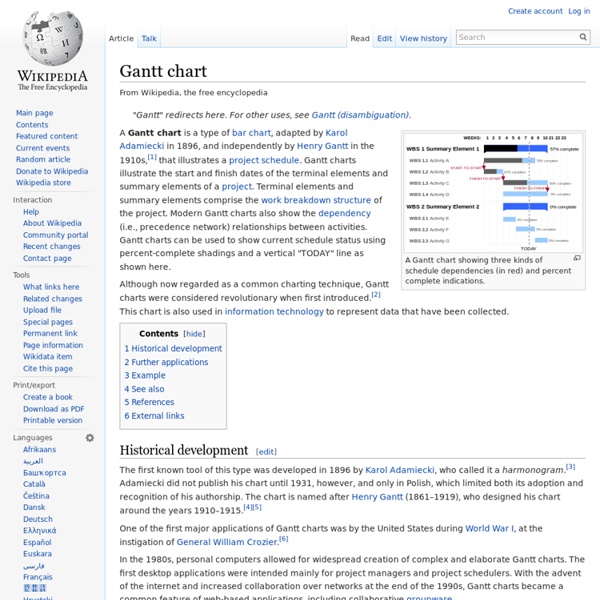Gantt chart

Work breakdown structure
Example of a product-oriented work breakdown structure of an aircraft system. A work breakdown structure (WBS), in project management and systems engineering, is a deliverable-oriented decomposition of a project into smaller components. Overview[edit] WBS is a hierarchical and incremental decomposition of the project into phases, deliverables and work packages. It is a tree structure, which shows a subdivision of effort required to achieve an objective; for example a program, project, and contract.[2] In a project or contract, the WBS is developed by starting with the end objective and successively subdividing it into manageable components in terms of size, duration, and responsibility (e.g., systems, subsystems, components, tasks, subtasks, and work packages) which include all steps necessary to achieve the objective. Example of work breakdown structure applied in a NASA reporting structure.[2] History[edit] The document has been revised several times, most recently in 2011. 100% rule[edit]
Work Breakdown Structure (WBS) Template
Introduction The Work Breakdown Structure (WBS) is a view into the project which shows what work the project encompasses. It is a tool which helps to easily communicate the work and processes involved to execute the project. The Project Manager and project team use the WBS to develop the project schedule, resource requirements and costs. There are many ways you can present the WBS for your project; this template provides many of the most popular layouts from which you can choose. In order to save space in this work breakdown structure template we only developed the WBS examples down to the third level. The Work Breakdown Structure presented here represents all the work required to complete this project. Outline View The outline view presents an easy to view and understand layout for the WBS. 1. Hierarchical Structure The hierarchal structure is similar to the outline view but without indentation. Tabular View The Tabular View is a nicely organized table view of the WBS. Tree Structure View
Related:
Related:



